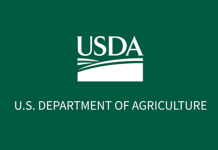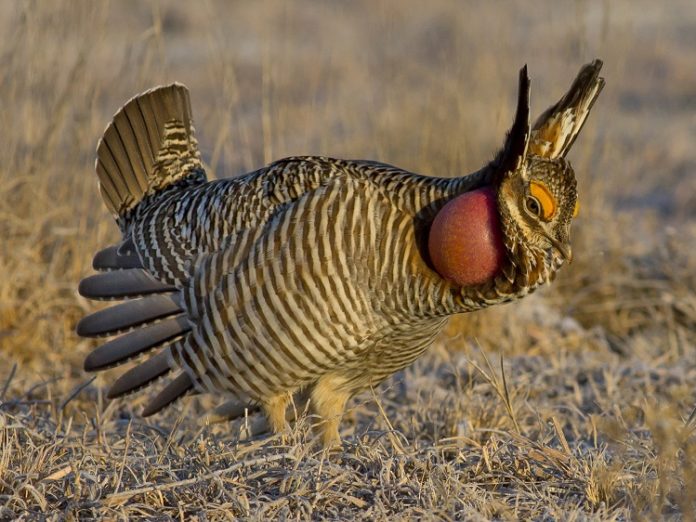Two environmental groups are appealing a federal judge’s decision to lift environmental protections for the lesser prairie chicken.
The Center for Biological Diversity and the Texas Campaign for the Environment on Monday filed an appeal challenging a Texas court’s decision to vacate a 2022 regulatory decision to give the bird – known for its feathered feet and stout build – environmental protections.
They are appealing the court’s decision to the U.S. Court of Appeals for the Fifth Circuit.
Last month, U.S. District Judge David Counts agreed to a request from the U.S. Fish and Wildlife Service to set aside the regulation because the agency said it used a faulty analysis when it extended environmental protections to the bird.
Fish and Wildlife listed the birds as “endangered” in eastern New Mexico and in the western part of the Texas Panhandle, where there were believed to be as few as 5,000 birds remaining, with the count dropping to as low as 1,000 birds in 2015.
The bird was listed as “threatened” in south-central and southwestern Kansas, southeastern Colorado, western Oklahoma and the northeast Texas Panhandle.
Regulators said the prairie chicken was not currently in danger of extinction in those areas including Kansas, but was likely to become at risk of extinction in the foreseeable future.
The agency concluded that it did not provide adequate justification and analysis to support the determination that the two identified population segments of the lesser prairie chicken were warranted.
“Courts can’t snatch away this bird’s chance at survival just because the Trump administration wants its protection gone,” said Jason Rylander, legal director of the Center for Biological Diversity’s Climate Law Institute.
“Lesser prairie chickens deserve a fair day in court when their existence is on the line,” Rylander said in a statement.
“Instead, the court blindly accepted the Trump administration’s bogus claim of error without even considering the opposition,” he said.
Counts sided with Fish and Wildlife’s request to vacate the regulation and send it back to the agency for refinement.
“Fish and Wildlife’s concession points to serious error at the very foundation of its rule,” Counts wrote in his Aug. 12 opinion.
“Fish and Wildlife is unable to correct this square one error without engaging in an entirely new analysis,” Counts wrote.
“And for another, any disruptive consequences of vacating the final rule are short lived and minimized by the sixteen existing voluntary conservation programs and efforts in place across the range of the lesser prairie-chicken.”
Counts noted that federal regulators anticipate that by Nov. 30, 2026, they will complete a new finding for protecting the bird.
He pointed out that the acting regional director of Fish and Wildlife indicated the entire process could be completed within 18 months.
Fish and Wildlife first listed the lesser prairie chicken as a threatened species in 2014, but it was challenged in court and later set aside in 2015.
Three years ago, the Biden administration again listed the bird as protected, leading to a storm of litigation.
With the change in presidential administrations in 2025, U.S. Fish and Wildlife reversed its position on protecting the bird because it said it used a faulty analysis.
“The lesser prairie chicken listing was carefully considered and checked all the legal and scientific boxes,” Rylander said.
“This is a pure Trump power play to put oil and gas industry profits ahead of these birds’ survival.”
In Kansas, the listing was challenged by the Kansas Livestock Association and Kansas Attorney General Kris Kobach.
Kobach said the listing would have undercut the Kansas economy.
“The listing of the species as threatened or endangered would have crippled oil and wind energy production and would have limited where and when Kansas ranchers could graze cattle on their own property,” Kobach said in a statement reacting to the decision.
“And it was based on manipulated numbers dividing the species into subgroups to create the impression the species was threatened—when in fact drought had simply caused populations in some areas to drop, while in other areas the numbers were stable. I’m grateful that the court saw it our way,” Kobach said.
















